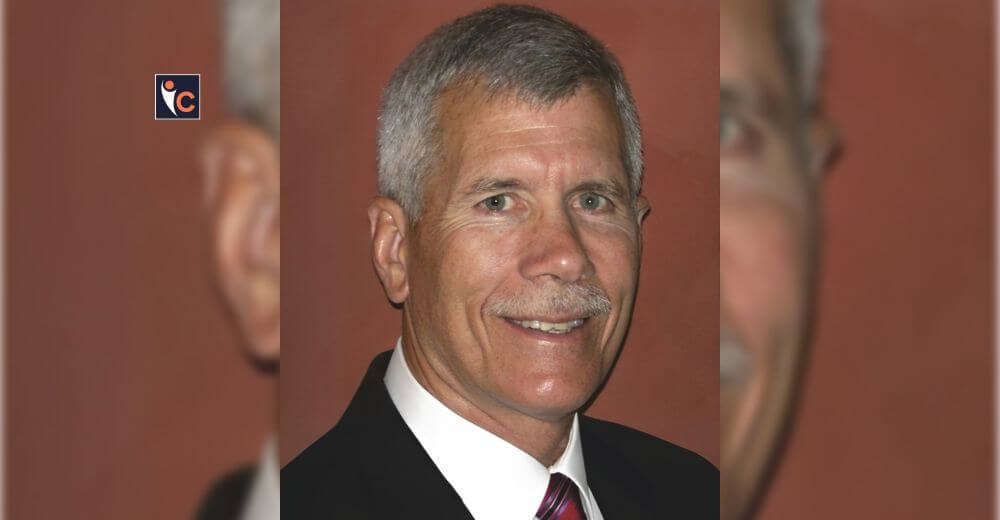In the face of pressing environmental challenges, the role of corporations in combating climate change has never been more crucial. Meet Jessica Harvey, the driving force behind sustainable initiatives at Barclays PLC, one of the world’s leading financial institutions. As the Climate Management Strategist, Jessica is at the forefront of shaping Barclays’ vision for a greener future.
With a deep-rooted passion for sustainability and a wealth of expertise in environmental management, Jessica has dedicated her career to mitigating the impacts of climate change. Her strategic insights and innovative thinking have propelled Barclays to the forefront of sustainable finance and responsible investing.
At the heart of Jessica’s role is the development and implementation of Barclays’ climate management strategies. She spearheads initiatives aimed at reducing the bank’s carbon footprint, integrating sustainable practices into its operations, and aligning the institution with global sustainability goals. Jessica works closely with stakeholders, including clients, regulators, and industry partners, to drive systemic change and ensure that environmental considerations are at the core of Barclays’ decision-making processes.
Under Jessica’s leadership, Barclays has been recognized for its commitment to sustainability, earning accolades and commendations for its environmental stewardship. Her expertise and influence extend beyond the bank, as she actively engages with policymakers and industry leaders to drive sustainable practices across the financial sector.
In an interview with Insights Care, Jessica talks about her visionary leadership and unwavering dedication, as she paves the way for a greener and more sustainable future. She is truly a driving force in transforming the financial landscape and creating a positive impact on our planet.
Following are the excerpts from the interview:
Kindly brief us about yourself and shed some light on your journey at the company.
I have been working in the Banking industry in New York City in a variety of roles for the last twelve years, spending the last seven with Barclays. I started with the firm on their Capital and Leverage Management team within the Treasury department, where I developed the capital adequacy model and analyzed the results required under the Basel Accord and Dodd-Frank Act-based stress tests to validate that Barclays’ US intermediate holding company could support its planned capital actions under stress and baseline scenarios while remaining above its calibrated target ratios, thus mitigating the risk of repeating a similar situation to the 2008 financial crisis. During the end of my time in this position, I constructed the bank’s financed greenhouse gas emissions model for the Climate Biennial Exploratory Scenario (CBES) required by the Bank of England to determine management actions needed to achieve net zero by 2050 under various scenarios reflecting physical and transitional risks.
Since 2021, I have been a member of Barclays’ Climate Management Strategy team for the commercial and investment bank under its new Sustainable Finance umbrella. I have evaluated the potential business, environmental and reputational impact of altering the firm’s climate policies and determined recommended options with senior Bankers, along with colleagues from Legal and Sustainability. I also have partaken in working groups across Climate Risk, QA, Business Managers, etc. to determine appropriate sector portfolio-based financed emission or emission intensity reduction targets and evaluated clients’ publicly disclosed decarbonization strategies to understand how supporting their transition plans could potentially impact Barclays’ net-zero ambition.
Please brief our audience about the company. Kindly tell us your source of inspiration for venturing into climate risk management.
Our shared values at Barclays: respect, integrity, service, excellence, and stewardship; the Barclays Mindset: to empower, challenge and drive; and the company’s strong commitment to diversity, equity, and inclusion—make the majority of colleagues consider it a great place to work based on employee surveys.
During the pandemic years, my interest in becoming involved in the increasing focus within the financial industry on climate change and sustainability heightened, perhaps due to the connection between environment and disease. Beginning last year, my Sustainable Finance department’s area of work became one of Barclays’ top three strategic priorities to sustain and grow the bank: to capture opportunities as we transition to a low-carbon economy.
Could you provide an overview of the company’s commitment to climate risk management and sustainability practices? How do you manage to align the operations to the company’s objectives?
Once a business sector portfolio’s emission (intensity) reduction target is determined by our internal working group, approved by senior management and publicly disclosed, Barclays’ BlueTrackTM model methodology is used to measure and manage the alignment of our portfolio-based financed emissions against the goals of the Paris Agreement. My Climate Management Strategy team determines whether to approve or deny lending and capital markets transactions above a certain threshold, based on periodic internal reports comparing assumption-based portfolio emission (intensity) projections to our calibrated 2025 and 2030 target reductions and the clients’ emission-based measures against our set reduction targets and Client Transition Framework scores.
Climate risk management has become a critical aspect of corporate responsibility. How do you approach the identification and assessment of climate-related risks within its operations and supply chain?
A separate team within the bank manages Barclays’ Scope 1 and Scope 2 emissions, i.e., direct emissions from owned or controlled sources, and indirect emissions from the generation of purchased energy, respectively. In this regard, Barclays has reached carbon neutrality. Most of our organization’s emissions are from Scope 3 emissions, i.e., all other indirect carbon-equivalent emissions that occur in the upstream and downstream activities of a company, as they include financed emissions from the companies we fund. My team continues to assess and score our clients’ climate-related activity and disclosed transition plans on both qualitative and quantitative bases. They will work to find financing solutions for clients who are underperforming before exiting activity with them entirely.
Can you share any specific initiatives or projects that you have implemented to mitigate climate risks and reduce their environmental impact? How have these initiatives contributed to the company’s overall sustainability goals?
I have investigated and analyzed the potential business, environmental, social, and reputational impacts of updating Barclays’ sustainability policies, recognizing that if the bank requires clients to discontinue certain business activities in an unrealistic matter of time, we may be forced to stop doing business with said clients shortly before they are financially and regulatorily positioned to properly transition their operations, only for those firms to receive financing from other institutions instead for the same purposes. Rather, Barclays focuses strategically on financing the climate transition by providing green and sustainable finance required to transform the economies we serve.
In what ways do you integrate climate risk management into the company’s overall business strategy and decision-making processes? How does this integration contribute to the company’s long-term success?
Given one of Barclays’ three strategic priorities is transitioning to a low-carbon economy, climate risk management has been increasing in importance for the company. Barclays added climate risk as a Principal Risk under its Enterprise Risk Management Framework in 2022 to help prevent associated financial and operational risks related to physical, transitional (regulatory, legal, technology, and market risks), and connected risks, as well as reputational risk, for the firm. In response, Barclays’ Climate Strategy ambitions are to achieve net zero operations and supply chain emissions, reduce our financed emissions, and finance the transition toward a greener and more sustainable world. My team in particular integrates climate risk into our strategy and decision-making when determining whether to approve large transactions to clients who could have significant weight on our sector-based portfolios’ emission (intensity) reduction measure and when evaluating Client Transition Framework scores.
What is your opinion on aligning your operations with newer technological developments, especially when it comes to catering to the requirements of climate risk management?
Barclays, as a financial institution, has low and carbon-neutral Scope 1 and 2 emissions. Therefore, it does not require new technological developments to the extent that its clients do in order to minimize emissions. The organization has announced its Sustainable Impact Capital mandate for £500 million of investment in climate-tech start-ups by 2027 and its target of £1 trillion of Sustainable and Transition Financing by 2030 to further assist the transition to a low-carbon economy.
What R&D operations are your conducting at present and why?
My teammate and I are currently working together with QA and Climate Risk to enhance the available simulation capabilities that can be applied to our forward-looking portfolio emission measures. For example, we can model the distribution of possible outcomes by adjusting clients’ reduction commitments, calculating the impact of a certain percentage of clients missing their targets, or applying uncertainty factors to each client based on their qualitative score under our internal Client Transition Framework evaluations. The more flexible sensitivity analysis and simulation access we are capable of developing, the better climate risk understanding we will have of our financing portfolios and the more informed decisions we can make when determining whether to continue financing clients.
What are some of the challenges you face when conducting operations and how do you turn them into opportunities for growth?
One challenge is knowing when to discontinue business activity with clients if they continue to operate outside of our policy requirements or do not improve under our Client Transition Framework assessments. The theme across Barclays’ Sustainable Finance department this year is to find opportunities to be more on the offense rather than defense, i.e. funding client solutions through green or sustainable financing rather than exiting those companies entirely, only for them to receive “brown financing” from other competing financial organizations. Three thematic areas of potential opportunity for Barclays are energy transition finance, sustainable finance instruments, and retail and business banking, e.g. green mortgages or EV loans.
Being an industry expert, would you like to advise budding entrepreneurs and enthusiasts aspiring to venture into the sector that you are catering to?
For entrepreneurs and enthusiasts looking to impact climate risk, I would recommend following Barclays Eagle Labs, a network of incubator spaces to help entrepreneurs and ambitious businesses innovate and scale, which recently launched its first venture launchpad specializing in climate change and innovation, and Unreasonable, a partner organization of Barclays’ that supports a fellowship for growth-stage entrepreneurs working to solve global problems.
How do you envision scaling your services and operations in 2023 and beyond?
Since 2020, when Barclays announced its ambition to be a net zero bank by 2050, the bank has been materially expanding its personnel within its Sustainable Finance; Environmental, Social, and Governance (ESG) Research; Climate Risk; Climate Reporting; and ESG and Sustainability departments. Additionally, the bank’s fairly new Global Head of Sustainable Finance, Daniel Hanna, has just recently been added to the Management Team for Barclays’ Commercial and Investment Bank.
I have no doubt that the long-term focus on Sustainability, particularly environmentally related at the moment, will continue to gain momentum throughout the entire organization’s culture, as we focus on best practices for our shareholders, stakeholders, and society overall.
| Next Story: https://insightscare.com/joydeep-ganguly-leading-the-charge-towards-a-sustainable-and-healthier-future/ |










